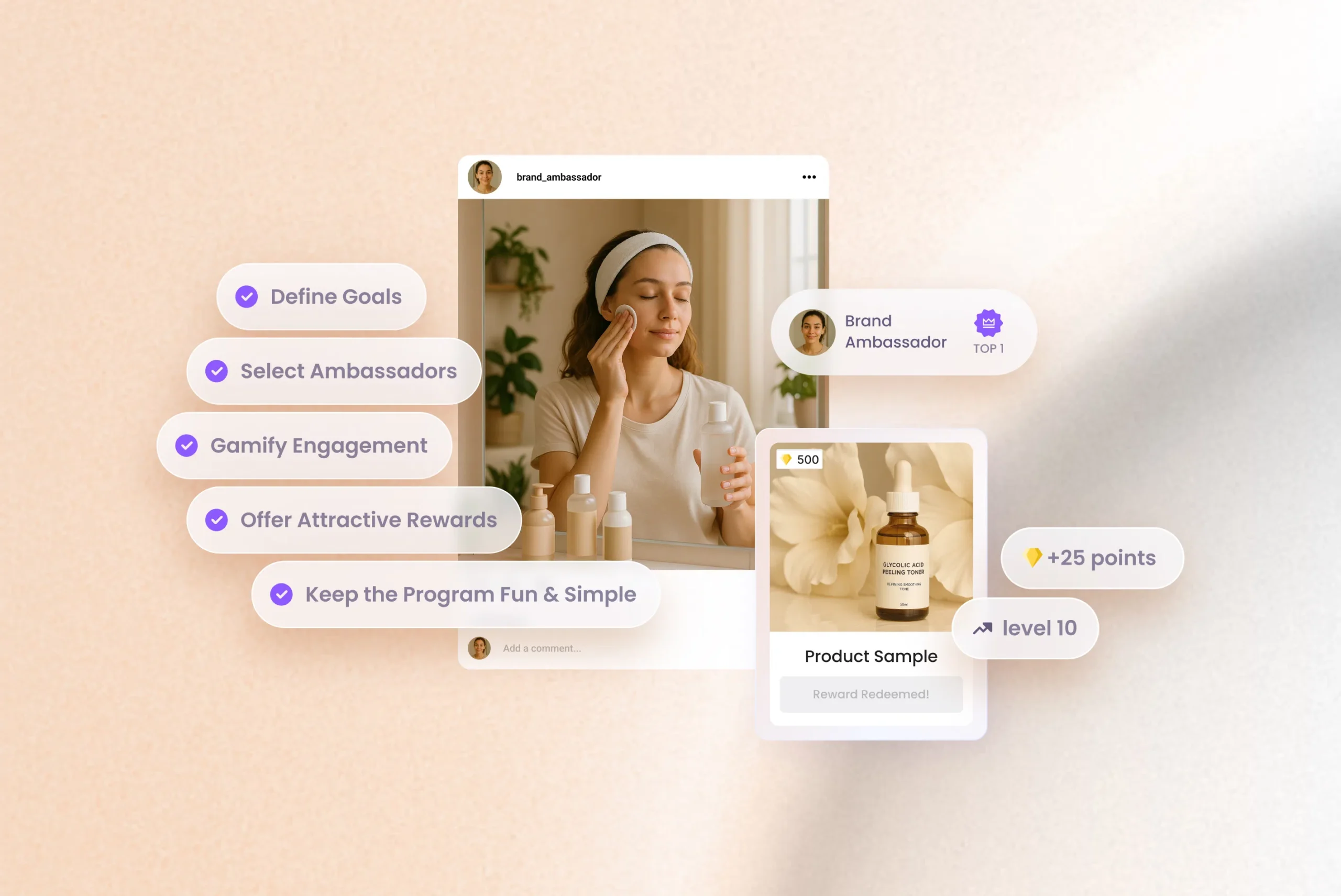
Marketing has changed dramatically in the last decade. Traditional influencer campaigns are losing momentum, ad costs are rising, and consumers have grown skeptical of polished brand messages.
What do people trust most today? Each other.
That’s why User-Generated Content (UGC) and brand ambassadorship have become some of the most powerful forces in digital marketing. According to Nielsen, 92% of consumers trust UGC more than branded content, and studies show that nano-ambassadors generate engagement rates up to 7–10%, compared to under 2% for macro-influencers.
In this ebook, we’ll explore why ambassador marketing is booming, how to set up your own program, and which KPIs to track to prove real ROI.
Chapter 1: Why Traditional Influencer Marketing Is Losing Ground
For years, influencer marketing was the go-to strategy for consumer brands. But cracks have started to show:
- Rising costs: Influencer fees have increased by 25–40% YoY in many industries.
- Declining trust: Many consumers see influencer posts as paid ads, not authentic recommendations.
- Falling engagement: Macro-influencers now average <2% engagement per post (Influencer Marketing Hub).
- Limited scalability: A few posts from high-profile influencers rarely sustain long-term community engagement.
The shift: Instead of paying for reach, brands now focus on authenticity, community, and long-term advocacy.
Chapter 2: What Makes Ambassador Marketing Different
Ambassador marketing turns your customers and fans into the face of your brand. Instead of a handful of influencers, you can mobilize hundreds or thousands of everyday advocates.
Key differences from traditional influencer marketing:
- Authenticity: Ambassadors are genuine customers, not celebrities.
- Scale: A single program can activate hundreds of advocates simultaneously.
- Sustainability: Ongoing engagement, not one-off posts.
- Value: Rewards are linked to engagement, not follower count.
Ambassador marketing blends advocacy + loyalty mechanics: rather than rewarding purchases only, you reward social actions, UGC creation, referrals, and influence.
Chapter 3: How to Launch a Successful Ambassador Program
Launching an ambassador program doesn’t need to be complicated. Here’s a roadmap:
Step 1. Define Your Goals
- Do you want to boost engagement on social channels?
- Collect more authentic UGC for ads and campaigns?
- Build loyalty and repeat purchase behavior?
- Enrich your CRM with first-party data?
Step 2. Select Ambassadors
- Identify existing loyal customers (through CRM, loyalty, or social listening).
- Look for engaged social followers, not just big accounts.
- Use sign-up forms or gamified onboarding to recruit at scale.
- Or… go big and target your entire community !!
Step 3. Gamify Engagement
- Reward comments, mentions, UGC posts, surveys, referrals.
- Introduce levels and badges (e.g., “Glow Starter,” “Trendsetter”).
- Launch challenges: weekly or monthly themes with small prizes.
Step 4. Offer Attractive Rewards
- Exclusive experiences (early access, events).
- Product samples or perks.
- Public recognition (features, leaderboards).
- Discounts or vouchers.
Step 5. Keep the Program Fun & Simple
Complexity kills adoption. Ambassadors should understand in 30 seconds what to do, how to earn, and what they get.
Chapter 4: Key KPIs to Measure Success
To convince your CMO, you need numbers. Ambassador programs can deliver:
- Engagement Lift: +200–400% increase in engagement compared to brand-only posts.
- UGC Collection: 20–40% of campaign content sourced directly from ambassadors.
- Cost Savings: 15–40% lower CAC when combining UGC + ambassador-driven reach with paid ads.
- Conversion Rates: +25% uplift across paid, email, and retargeting when UGC is used.
- Loyalty Impact: Ambassadors engaged in gamified campaigns purchase x4 more often and show 30% higher repeat rates.
Chapter 5: Real-World Example
A cosmetic brand working with Spitche reported:
- +60% Instagram engagement driven by ambassadors vs. brand-only content.
- 20% of UGC in campaigns sourced directly from ambassadors.
- More precise CRM data on top consumers, leading to better targeting and collaborations.
This shows that ambassador programs don’t just boost vanity metrics – they impact the bottom line.
Chapter 6: The Future of Ambassador Marketing
Looking ahead to 2025 and beyond, ambassador marketing is poised to grow as:
- Privacy regulations (like GDPR) limit third-party data.
- Brands seek first-party data through communities.
- Consumers demand authentic voices, not ads only.
- UGC becomes a cornerstone of social commerce and ads performance.
The takeaway: Ambassador programs will become as essential as loyalty programs were 10 years ago.
Conclusion
Ambassador marketing is no longer a “nice to have” – it’s a core growth strategy for modern brands.
By activating your most loyal fans, rewarding authentic engagement, and turning UGC into a measurable sales driver, you create a sustainable marketing engine that builds community, loyalty, and revenue.
Now is the time to invest before your competitors turn their consumers into ambassadors first.